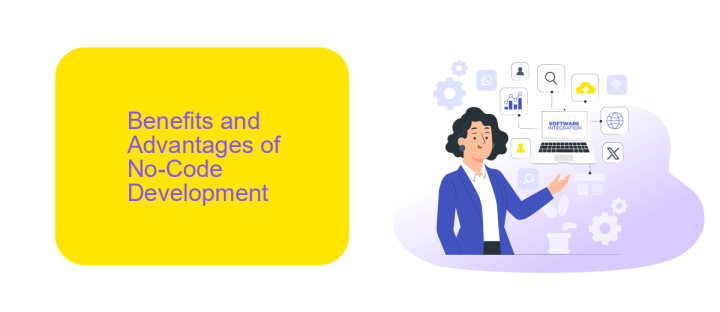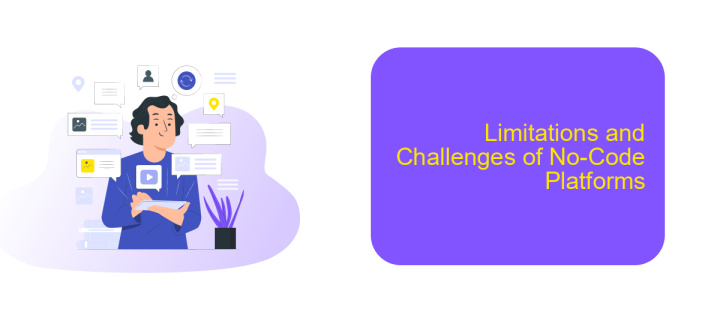No-Code Engineering
No-Code Engineering is revolutionizing the way we approach software development. By enabling individuals without traditional coding skills to create complex applications, no-code platforms democratize technology and accelerate innovation. This paradigm shift not only reduces development time and costs but also empowers a broader range of people to bring their ideas to life, fostering creativity and inclusivity in the tech industry.
Introduction to No-Code Engineering
No-Code Engineering is revolutionizing the way businesses and individuals create software applications. By eliminating the need for traditional coding skills, it empowers a broader audience to develop functional and sophisticated solutions. This approach leverages visual interfaces and pre-built components to streamline the development process.
- Accessibility: Enables non-technical users to build applications.
- Speed: Accelerates the development lifecycle.
- Cost-effective: Reduces the need for specialized developers.
- Flexibility: Offers a wide range of customizable options.
One of the key advantages of No-Code platforms is the ease of integrating various services and APIs. Tools like ApiX-Drive simplify this process by providing user-friendly interfaces for setting up integrations without a single line of code. This allows businesses to automate workflows and enhance operational efficiency seamlessly. As No-Code Engineering continues to evolve, it is set to democratize software development, making it accessible to everyone.
Benefits and Advantages of No-Code Development

No-code development offers numerous benefits, primarily enabling individuals without technical backgrounds to create functional applications and websites. This democratization of technology empowers entrepreneurs, small businesses, and non-technical teams to bring their ideas to life quickly and cost-effectively. By eliminating the need for extensive coding knowledge, no-code platforms significantly reduce development time, allowing for rapid prototyping and quicker iterations based on user feedback.
Additionally, no-code tools often come with built-in integrations and automation capabilities, streamlining workflows and enhancing productivity. Services like ApiX-Drive facilitate seamless integration between various applications, enabling users to automate routine tasks without writing a single line of code. This not only reduces the operational burden but also allows teams to focus on more strategic initiatives. Overall, no-code development fosters innovation, agility, and efficiency, making it an invaluable asset in the fast-paced digital landscape.
Applications and Use Cases of No-Code Engineering

No-Code Engineering has revolutionized the way businesses approach software development by enabling users to create applications without traditional coding skills. This approach has opened up numerous opportunities across various industries, allowing professionals to focus on innovation rather than technical barriers.
- Business Process Automation: Streamline repetitive tasks and workflows without writing a single line of code.
- Website and App Development: Quickly design and deploy websites and mobile apps using intuitive drag-and-drop interfaces.
- Data Management: Simplify data collection, analysis, and reporting through customizable dashboards and forms.
- Integration of Services: Tools like ApiX-Drive facilitate seamless integration between different software applications, enhancing productivity and reducing manual effort.
- Prototyping: Rapidly create and test prototypes to validate ideas and gather user feedback before full-scale development.
From small startups to large enterprises, No-Code Engineering empowers teams to bring their ideas to life quickly and efficiently. Services like ApiX-Drive play a crucial role in this ecosystem by providing easy-to-use integration solutions that connect various applications, ensuring smooth and automated workflows. This democratization of technology fosters innovation and accelerates time-to-market for new products and services.
Limitations and Challenges of No-Code Platforms

No-code platforms have revolutionized the way individuals and businesses approach software development. However, they come with certain limitations and challenges. One significant limitation is the lack of flexibility. While no-code tools offer a range of functionalities, they often fall short when it comes to complex, custom requirements that traditional coding can handle.
Another challenge is scalability. No-code platforms may struggle to support large-scale applications or handle high volumes of data efficiently. This makes them less suitable for enterprise-level projects where performance and scalability are critical.
- Integration Issues: Integrating no-code solutions with existing systems can be problematic. Although services like ApiX-Drive help streamline these integrations, limitations still exist.
- Security Concerns: No-code platforms may not offer the same level of security features as traditional development environments, posing risks for sensitive data.
- Vendor Lock-In: Relying on a specific no-code platform can lead to vendor lock-in, making it difficult to switch providers or migrate to custom solutions later.
Despite these challenges, no-code platforms continue to be a valuable tool for rapid development and prototyping. Understanding their limitations can help users make informed decisions and choose the right tool for their specific needs.


Future Trends and Advancements in No-Code Engineering
The future of No-Code Engineering is poised for significant growth and innovation. As businesses increasingly seek rapid development solutions, no-code platforms are evolving to offer more advanced features. Artificial Intelligence (AI) and Machine Learning (ML) integrations are becoming more prevalent, allowing users to create intelligent applications without writing a single line of code. Moreover, the rise of IoT (Internet of Things) will drive the demand for no-code tools that can seamlessly integrate various smart devices, making automation more accessible and efficient.
Another key trend is the expansion of integration capabilities. Services like ApiX-Drive are leading the way by allowing users to connect different software applications effortlessly, streamlining workflows and enhancing productivity. With the growing emphasis on data-driven decision-making, no-code platforms are also focusing on improved data analytics and visualization tools. As these platforms continue to advance, they will democratize software development, enabling a broader range of users to innovate and solve complex problems without the need for extensive coding knowledge.
FAQ
What is No-Code Engineering?
Who can benefit from No-Code tools?
What types of applications can be built with No-Code platforms?
How does No-Code automation work?
Are No-Code solutions scalable for large businesses?
Apix-Drive is a universal tool that will quickly streamline any workflow, freeing you from routine and possible financial losses. Try ApiX-Drive in action and see how useful it is for you personally. In the meantime, when you are setting up connections between systems, think about where you are investing your free time, because now you will have much more of it.

